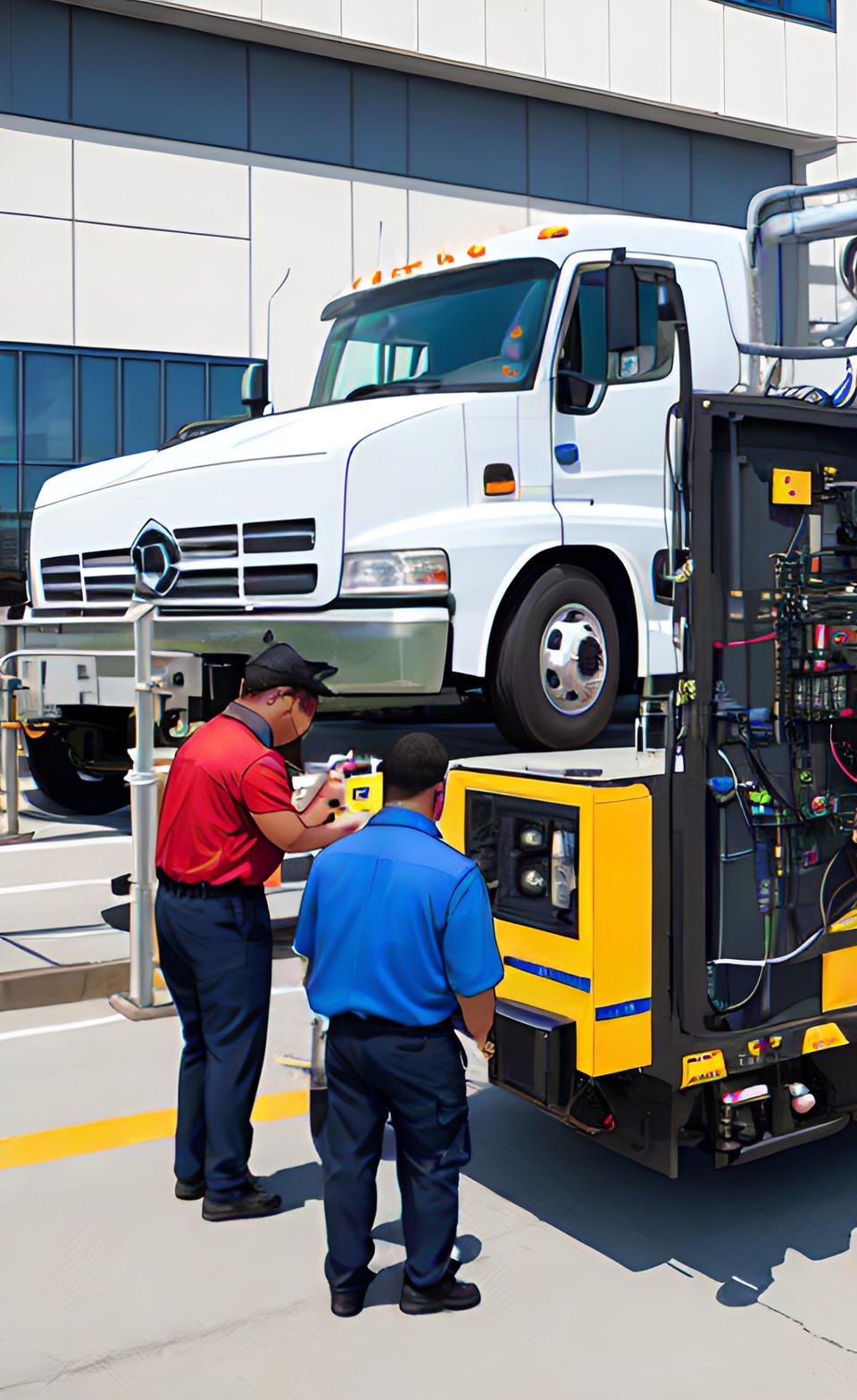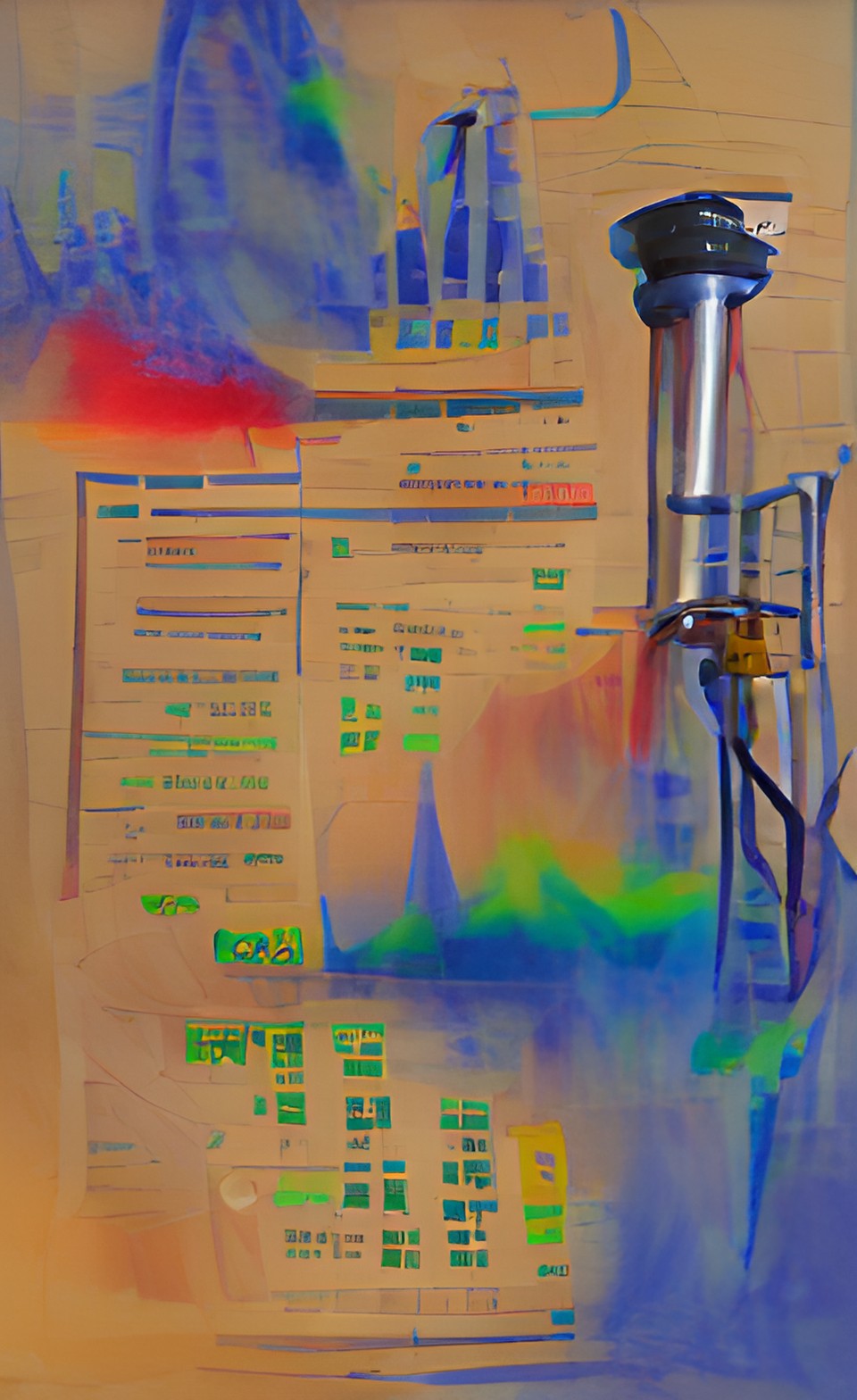- Air Homepage
- Alberta Air Quality
- Ambient Air Monitoring Equipment
- Mobile Air Quality Monitoring
Take Mobile Air Quality Monitoring to the next level
Mobile air quality monitoring involves using vehicles as self-contained laboratories. Using this method, you can collect data in any weather and while the vehicle is moving or stationary. In places without permanent monitoring stations or where existing stations can't provide the data, mobile units can collect air quality data.
Air Monitoring Vehicles: AMD Rules - Do you know what it takes to turn an ordinary vehicle into a certified air quality lab? Ensure your short-term air surveys are accurate enough for emergency response and government approval by unlocking the detailed regulatory blueprint.
In addition to collecting short-term data, mobile air monitoring can be used for assessing areas without fixed monitoring stations, investigating the need for new permanent stations, addressing public concerns about air quality, responding to emergencies, and studying short-term events like wildfires. Also, it's used to compare data from mobile units with that from permanent stations, validate existing monitoring methods, and evaluate air quality models.
Mobile air monitoring collects valuable air quality data in various situations and locations, making it a versatile tool for understanding and improving air quality.
Get a better understanding of mobile air quality monitoring and its advantages. Here, you'll learn how an innovative approach can help you handle everything from short-term data collection to emergency response. This article is a summary of The Alberta Air Monitoring Directive, Chapter 4 and specifically Section 4 of the chapter. You can see the earlier sections here.
With this summary you can increase your confidence in the data collected and learn about the rigorous training and qualifications required to operate the mobile units. These include vehicle configuration, instrumentation, and power systems.
Regulators enforce rigorous quality control measures, including precise calibration, vigilant monitoring, and strict compliance with government and industry guidelines. Accountability is further enhanced by your record-keeping and data-storage capabilities.
See how air quality consulting companies help you provide accurate and reliable air quality data. For regulatory compliance, public health, or environmental stewardship, your facility might want to hire such a company for quality assurance and auditing tasks.
4.1 Mobile Air Quality Monitoring Station Personnel
In the Quality System Chapter, there are specific training and proficiency requirements for mobile air quality monitors. Monitoring, maintenance, and reporting tasks on these mobile units require proper training for the people operating them.
Depending on the equipment manufacturer, factory training can be provided as well as in-house training. As well as how to operate, maintain, and calibrate the mobile unit's instruments, it covers the vehicle's internal systems.
These people should have the following qualifications:
- Maintenance and operation training for all vehicle systems, including platforms and generators.
- Knowledge of the instruments on the vehicle, including calibration, maintenance, and operation.
- Using the mobile unit for at least two projects.
- Driver training for bigger vehicles (e.g., RVs).
- Data management and handling training, including Microsoft Excel.
- Data logger training.
- Occupational health and safety training, including hazardous materials training.
For accurate data collection and equipment maintenance, personnel operating mobile air quality monitoring units need to be well-trained and qualified.
4.2 Vehicle Configuration and Specifications
4.2.1 Platform
There are a few things to consider when designing a mobile air quality monitoring vehicle:
- Keeping the operator(s) and passengers safe is our top priority.
- Vehicle Design: The vehicle should be designed for air quality monitoring.
- Consider the types of instruments and equipment you'll need.
- Think about the support systems you'll need for monitoring.
- The vehicle should be big enough to fit all the equipment and personnel.
- Distribute the weight properly to make sure it's stable and safe.
- Considering four-wheel drive if necessary for the monitoring location.
- Ensure the vehicle's chassis can handle the monitoring equipment's weight.
- Assess the power requirements for the instruments and other systems.
- Consider the fuel capacity of both the vehicle and any generators.
- Identify the fuel type(s) for your vehicle and generator.
- Vehicle expandability: The vehicle should be able to accommodate more monitoring equipment.
- Manifold mounting: Make sure meteorological and sample collection equipment has the right mounting and hardware.
- You'll need enough storage space for air sampling gear and consumables.
- Consider adding amenities like a microwave, wash sink, or coffee maker for the operator(s).
Overall, when designing a mobile air quality monitoring vehicle, it's crucial to prioritize safety, meet specific monitoring needs, and make sure it can support equipment and personnel while providing essential conveniences.
 You need safety, precision placement, management, control, and wind accuracy.
You need safety, precision placement, management, control, and wind accuracy.4.2.2 Layout and Design
There are some rules to follow when setting up a mobile air quality monitoring unit:
- Instruments that are sensitive to temperature should be placed where temperature changes are minimal.
- Instrument racks shouldn't be near doors.
- In case of a leak, secure gas cylinders in a safe area with proper ventilation.
- The instruments inside the analyzer should be securely fastened to prevent movement.
- Make sure the intake for the sampling manifold is as far away from the exhaust and power generation system as possible.
- The sampling manifold must be durable and resistant to the substances being monitored, as well as secure enough to withstand the vibrations and shocks of mobile monitoring.
If the unit has two or more monitoring instruments, a sampling manifold is better than a sampling line. While ensuring the safety of the operation, these measures keep the monitoring equipment accurate and reliable.
4.2.3 Instrumentation and Specifications
A mobile air quality monitoring unit's instrumentation and specs are as follows:
- The person in charge needs to pick continuous air analyzers and meteorological sensors that meet the standards outlined in the Monitoring Chapter.
- The monitoring chapter provides guidelines for operating all selected equipment, including continuous air analyzers and meteorological sensors.
- The manufacturer's instructions and validated methods must be followed if any extra analyzers or instruments are used in the mobile unit.
- When monitoring air quality with the mobile unit, it's important to keep all monitoring instruments within the manufacturer's temperature range. Measuring this way helps keep them accurate.
4.2.4 Power System(s)
Here's the power system for a mobile air monitor:
- The person responsible must make sure that the vehicle's exhaust and power system don't interfere with the air pollution measurements.
- Affected Data: If any data collected by the mobile unit are affected by the vehicle or generator exhaust, note it.
- For units that measure pollutants like CO, NO/NO2/NOx, and hydrocarbons, you should use cleaner fuels like natural gas or propane. Measurements can be messed up by gasoline and diesel exhaust.
- The power system: When setting up the power system, think about using clean fuels, adding devices like catalytic converters to reduce exhaust interference, having a backup generator, and making sure you can connect to external power when you need it. You can run the unit without an engine or generator by using shore power, and there should be a safe way to switch between them.
4.2.5 Heating, Ventilation and Air Conditioning System
A mobile air quality monitoring unit's heating and cooling system:
- Maintenance of the temperature: The person in charge must make sure the unit has a heating and cooling system. The temperature should be within the range for all the instruments.
- Keeping the temperature steady during monitoring and calibration: When the instruments are actively monitoring the air or being calibrated, the person responsible needs to keep the temperature steady. It has to be within the range of the instruments.
- Temperature recording: In addition to keeping the temperature steady, they need to measure it inside the unit and record it in the monitoring system.
4.2.6 Meteorological (Mast)
Monitoring wind conditions:
- Wind data and direction: The person in charge of the mobile monitoring unit should report wind data from true north. To get this right, they might use special instruments or adjust the data system. Reports should mention any local issues that affect wind data.
- It's best to record wind direction in degrees (like 0°, 90°, 180°, etc.). It can also be recorded in compass directions (like north, east, south, west).
- When the mobile unit is moving, wind data should be marked as invalid. When the unit is stationary, it's important to collect wind data.
- When monitoring while stationary, the wind mast on the mobile unit should be at least 2 meters above the roof. You'll get accurate readings at this height.
4.2.7 Global Positioning System
Here's how GPS works in the mobile monitoring unit:
- Installation of GPS: The person in charge should set up a GPS system on the mobile air qualmonitoring unit, and it should be connected to the data acquisition system.
- The GPS and data system should record the following information every time data is collected:
1. Your latitude (north-south),
2. Your longitude (east-west location),
3. Date (when the data was collected),
4. Mobile monitoring unit speed, and
- If it's moving, the direction it's going, or if it's stationary, the direction the front is facing.
- If you need to, you can also record the elevation. GPS keeps track of where and when data is collected.
4.2.8 Instrument Pumps and Housing
What it means about instrument pumps and housing:
- Venting Exhaust: Make sure the exhaust from each instrument is directed outside of the mobile air monitoring unit. As a result, the exhaust doesn't mix with the air being brought in through the sampling system.
- Housing Pumps: If there are pumps outside the instruments, they should be placed where there's good airflow (ventilation). It's also important to keep the temperature in that place within the range recommended by the pump manufacturer. To keep them cool, these pumps are sometimes put in an external compartment.
4.2.9 Data Acquisition
There are rules for using the data acquisition system in Chapter 6 of the AMD. It's like a guide to gathering and managing air quality data. They make sure the data is accurate and reliable.
4.3 Instrument Calibration
Chapter 7 of the AMD has rules for calibrating continuous analyzers, which measure air quality. These rules make sure these instruments are accurate.
When mobile air quality monitoring is needed in an emergency, an audit can be done to check if the operator is capable and the monitoring unit is ready. Calibration must be done if there are issues.
Calibration systems for these instruments must meet audit requirements outlined in Chapter 8 of the AMD. Calibration instruments and gases should be kept in a sealed cabinet or vented compartment outside the monitoring unit.
4.3.1 Timing
Whenever the mobile air monitoring unit and its instruments have been off for more than three days, a multipoint calibration must be done to make sure they're accurate.
The responsible person must either recalibrate the instruments before turning them off for more than three days or keep the unit connected to shore power and recalibrate it every month.
4.3.2 Zero and Span
To make sure the mobile air monitoring unit is accurate, zero-span tests are essential:
- When the monitoring equipment is ready, we run daily zero-span tests.
- The tests are done on the same day as the survey begins, using the generator's power.
- Testing is done on the same day as monitoring ends, again using the generator's power.
- Zero-span tests are done every 12 hours at least for monitoring lasting over 24 hours.
- When stability is achieved for at least 10 minutes, the test is valid. To start monitoring, the zero value must be within 3% of the analyzer's full scale range. Corrective actions must be taken if a span deviates by more than 15%.
- While active monitoring is going on, zero or span tests shouldn't be done.
The Air Monitoring Directive lays out our strict calibration rules for continuous analyzers to make sure they're accurate. At Calvin Consulting, our audits help you ensure accuracy and reliability when air monitoring is needed. Find out more about these services below.
4.4 Monitoring Plan
Mobile air monitoring plans are like roadmaps:
- You can find out what the survey is about, when it starts and when it ends.
- The survey explains why it's being done and what it's for.
- Specifies what will be measured and reported.
- It gives how the data will be collected.
- It pinpoints where the survey will be.
- The vehicle and power needs are listed.
- Staff need to get training and certifications.
- After data collection, it covers processing and reporting.
- Mobile air monitoring is organized, efficient, and effective with this plan.
 To pick the best location, you need expert judgment.
To pick the best location, you need expert judgment.4.4.1 Siting Criteria
Because of their unique goals, mobile air monitoring sites don't always follow standard rules. Operators should pick the best spots. Here's what they look at:
- Sites with open spaces are ideal, away from trees and buildings.
- Exhaust from nearby vehicles makes them avoid those places.
- Exhaust moves away from the monitoring unit, which faces the wind.
- Safety is key; the unit shouldn't block roads.
Operators need to use their expert judgment when picking these spots.
4.5 Data Storage and Records
Mobile air quality monitoring data is stored and recorded according to existing guidelines. At all times, the operator must keep calibration documents, instrument maintenance history, and zero and span reports for the past six months. Specific chapters of the guidelines have more requirements.
Chapter 4 of the AMD continues with the section on Precipitation monitoring.
Here's why Calvin Consulting Group Ltd. is your partner for comprehensive air quality solutions Are you looking for a trusted partner to take your mobile air quality monitoring to the next level? We've got quality assurance plans, auditing, and more. Send us an email today to find the right fit for your air quality monitoring needs.

Air quality goes beyond monitoring. Our quality control measures ensure that your air quality data is accurate and reliable. Our quality assurance plans include calibration, monitoring, and adhering to government and industry guidelines. We help you keep records and store data so you're more accountable. With Calvin Consulting Group Ltd., you can trust your air quality data like never before.
We're Calvin Consulting Group Ltd.
A mobile air quality monitoring unit gives us insights into air quality in a variety of situations.
As well as short-term data collection, these units assess areas without fixed monitoring stations, address public concerns, respond to emergencies, and validate existing methods. However, mobile units are only reliable if they're safe, trained, and configured correctly.
Do you have concerns about air pollution in your area??
Perhaps modelling air pollution will provide the answers to your question.
That is what I do on a full-time basis. Find out if it is necessary for your project.
Have your Say...
on the StuffintheAir facebook page
Other topics listed in these guides:
The Stuff-in-the-Air Site Map
And,
Thank you to my research and writing assistants, ChatGPT and WordTune, as well as Wombo and others for the images.
OpenAI's large-scale language generation model (and others provided by Google and Meta), helped generate this text. As soon as draft language is generated, the author reviews, edits, and revises it to their own liking and is responsible for the content.





New! Comments
Do you like what you see here? Please let us know in the box below.